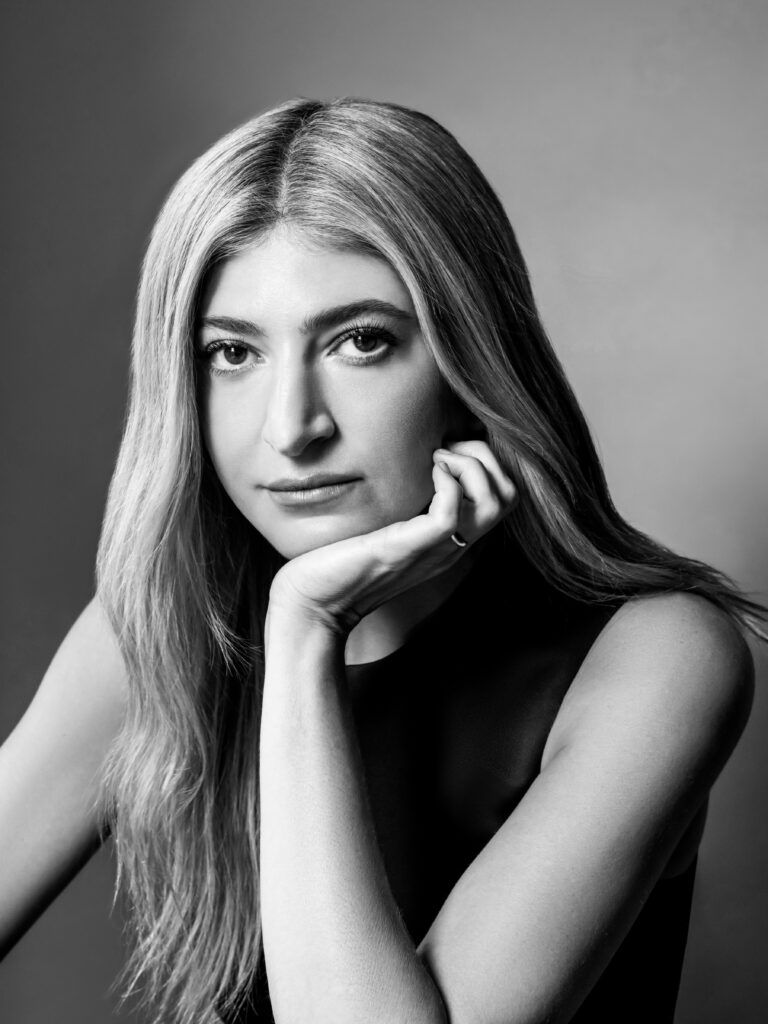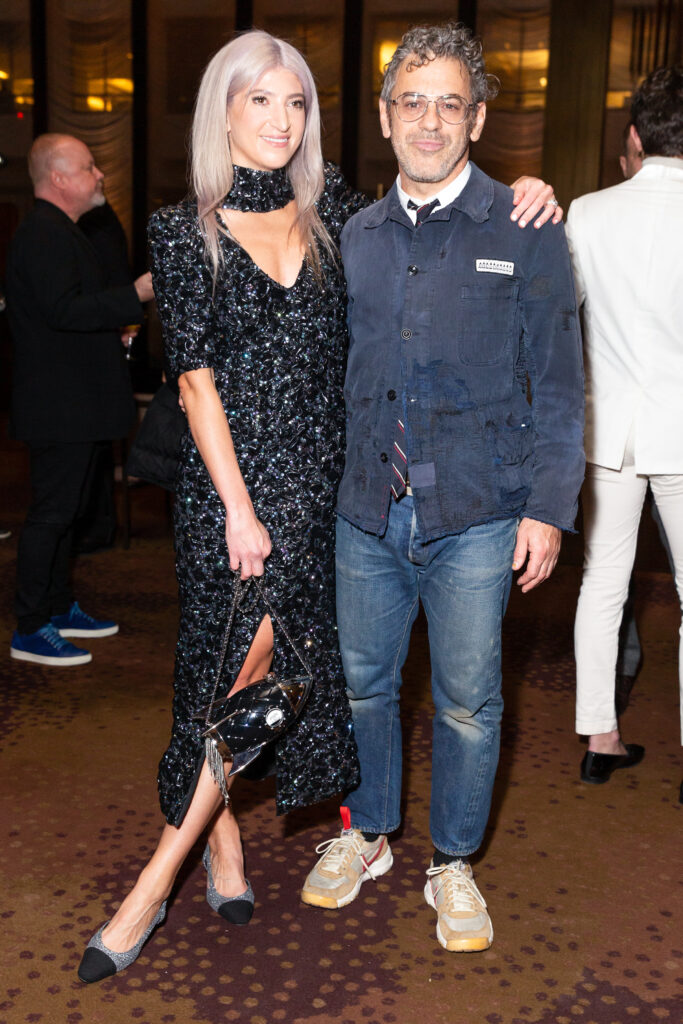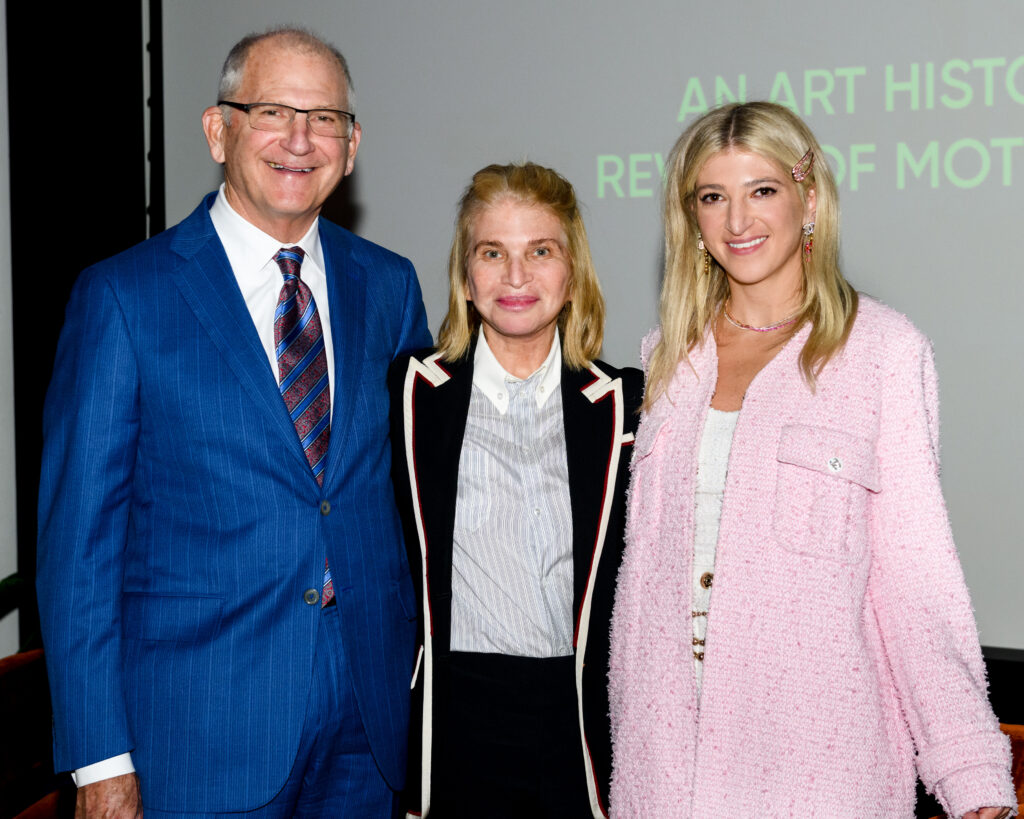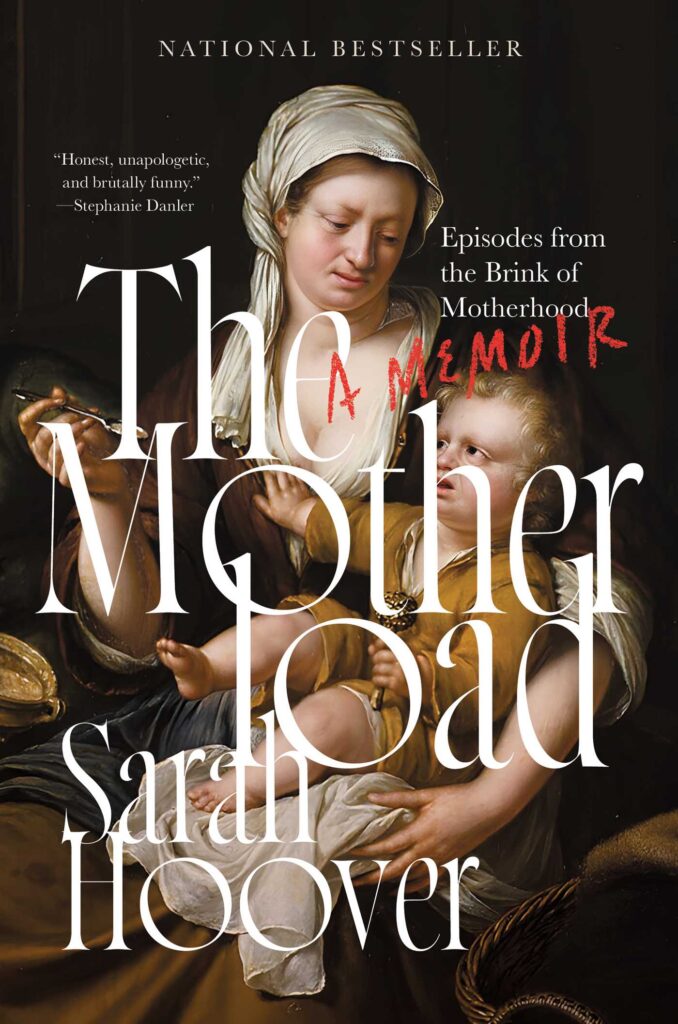“In high school, a girl asked me, do you even own anything Chanel? I was like, Yeah, a lipstick! That I stole from my mom.” – Sarah Hoover

A self-described “cultural octopus,” It Girl and author SARAH HOOVER is invited to every cool party on the planet. She is living the New York dream: Midwestern girl moves to the big city, climbs the ranks of the art world, marries art superstar Tom Sachs and becomes a regular in the pages of Vogue. JANET MERCEL speaks with Hoover about her new bestseller, The Motherload: Episodes from the Brink of Motherhood—and learns how Hoover clawed her way back from the edge.
PORTRAIT BY Beowulf Sheehan
Your experience with postpartum depression was severe.
I hadn’t realized how far gone I was. I was basically driven mad. When I read my journals from that time, it was years and a lot of therapy later. By then, I was just laughing at it. I was aghast at how much worse it was then I remembered. Those entries were so emotional and impassioned, at points even my handwriting was a gruesome scrawl. But writing the book wasn’t triggering at all. By then I knew exactly what I wanted to say. I was in control of it.
The wild rage you felt at the world after you gave birth—at your husband, your doctors, your mom—was palpable. It brought me back to the first days after my 2-year-old was born.
I had a very clear vision of what I wanted the reader experience to be. I read a lot of Sylvia Plath when I was in middle school. It was not easy to understand why someone so talented would end up sticking her head in the oven. It was my goal in the book to carry someone through the roller coaster of that kind of depression, to a point where they understand the experience and say, I get it now.
You and your husband, the artist Tom Sachs, were able to heal your rupture enough to stay together and have another baby. Do you feel like you’ve gained more empathy for him, or is it still like, come on, man, you can do better?
Men’s lives are just easier. They don’t understand our points of view because they haven’t had to. I know what it’s like to try and be a mother when you’re profoundly depressed and disconnected. It’s hard to be a good mom in those conditions; you can’t raise functional, contributing members of economy or community. It felt urgent to give women the language to feel seen and be more vocal when their interactions with men didn’t serve them. I also wrote it as a kind of tutorial for men.

Speaking of interactions with women—you wrote about a French actress insulting your looks at a dinner and a stylist trashing your hair while prepping you for your son’s baby shower at Chateau Marmont. Why did those moments of casual cruelty stick out? What do you think was behind it? Because you’re Tom Sachs’ wife? Or because you seem so comfortable in your own skin?
It’s so funny to hear you say I’m confident in my own skin, because I’m very not.
Appear to be confident, then. The energy you put out is of someone in control.
Living in this patriarchy, women are trained to be insecure. They learn to inflict small cruelties on each other. And men weren’t any nicer to me, they were just cruel in different ways. At the time I internalized those comments, but now I can laugh at women like that. What is your inner monologue like if you’re putting that into the world?
“I read a lot of Sylvia Plath when I was in middle school. It was not easy to understand why someone so talented would end up sticking her head in the oven. It was my goal in the book to carry someone through the roller coaster of that kind of depression, to a point where they understand the experience and say, I get it now.” – Sarah Hoover
You’re not 25 years old anymore, either. You’ve made an effort to grow into someone who doesn’t take her issues out on other women.
I have other shit to worry about—I have two kids. I don’t want to be the kind of bitter woman who puts her worst, most insecure self on display just to get a marginal sense of comfort from slinging insults. I worked hard not to become that person. I feel sad for her.
What book changed your life?
We already talked about Sylvia Plath, so The Bell Jar. Especially the first part when she’s in New York—that exciting, nostalgic version of New York City. Virginia Woolf. They were my entry into writing from the female experience. Valley of the Dolls, and I know what a trope that is, but it’s real.
Contemporary writers?
I read Stephanie Danler’s memoir Stray while I was writing my book. Prozac Nation, too. And Sex and The City. I read my mom’s copy. I’m sure the show was already out by then, but we didn’t have HBO.
I love the idea of your mom [James Beard recognized restaurateur Martha Hoover] reading and loving Sex and the City in Indiana in the ‘90s while living a very different life.
Right? A very different life.

Ok, fashion question. The media makes it seem like you only ever wear head to toe Chanel.
I have no control over that! I wear plenty of other designers. But I am really impressed by Chanel. It’s still made by hand in the same workshops, where someone’s granddaughter works—that’s rare. They could produce more and make more money, but they keep things limited because quality matters so much. I love those ethics. When I was a kid in Indiana, reading Seventeen or whatever, I was smitten with Chanel ads. In high school, a girl asked me, do you even own anything Chanel? I was like, Yeah, a lipstick! That I stole from my mom. When I experienced the brand firsthand, I thought—I had good taste! I was right! I have Chanel from my mom, and I’ll pass mine down to my kids. It’s a throwback to a better time in quality.
Is Balthazar still your emergency go-to for martinis?
Of course! I have a feeling I’ll soon be adding San Vicente Bungalows to that list.
Uptown?
The Carlyle, obviously. And they have a leg up on Balthazar because if things get rowdy, they have hotel rooms.

Buy The Motherload HERE

